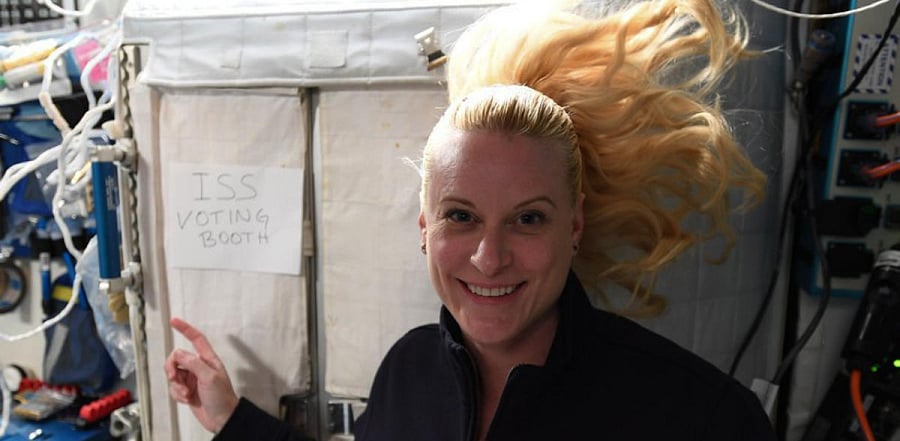
The universal adult franchise is exactly what NASA astronaut Kate Rubins exercised on October 22 even though she was not on the surface of the earth.
She cast her vote for the US presidential elections while floating 408 kilometers above the Earth from the International Space Station in a small white enclosure dubbed ‘ISS voting booth’ with her blonde hair floating in the zero-gravity environment.
In situations like this, the process to voice your opinion through polls is usually known as absentee voting.
How does it work?
Prior to the launch, the astronaut starts the process by Federal Postcard Application (FPCA) if they want to participate in an upcoming election.
Once the FPCA is approved, the county clerk who manages the election in the astronaut’s home county sends a mock ballot to the team at the Space Centre.
The Centre then uses a space station computer to test whether the ballot can be filled and sent back to the county.
Once the test is successful, the county clerk’s office generates a secure e-ballot which is uplinked to Johnson’s Mission Control Centre. An assigned crew member from the Centre becomes the middle person who has access to the astronaut’s ballot.
The encrypted ballot then travels through NASA’s Space Network like any other piece of data.
Once the ballot is downloaded and sent to the Mission Control Centre, it is transferred to the county clerk responsible for casting the ballot.
To preserve its integrity, the ballot can only be accessed by the astronaut and county clerk who is responsible for casting the ballot.
This was not the first time an astronaut has voted for their democratic right from the abyss of space. In 1997, David Wolf was the first American to vote from space after a law was introduced to enable astronauts to vote from space.
With agency inputs
